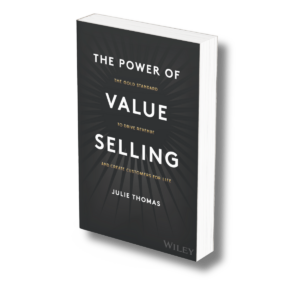When you’re sick, what do you do? Google your symptoms, right?
Instantly, you’re presented with a slew of information: A headache is most likely a headache – though it could be hay fever, a sinus infection, the flu or even the prelude to a rare neurological condition.
The rabbit hole of information is never-ending if you choose to go down it, and in the end, we’re never fully confident in our conclusions.
Now, imagine doing the same thing on the scale of a global organization. Research and compile all of the symptoms, underlying conditions and environmental factors that affect the health of a business – then try to muddle through all of the possible solutions in the marketplace.
It seems nebulous, doesn’t it?
That’s exactly the boat that C-suite executives find themselves in. Confronted with serious inflation of information, executive buyers become confused – and when they’re confused, they do nothing. This is doubly true in economic times like the present. When the economy seems to be continually hovering on the edge of a recession, the de facto response is to wait and see.
However, inaction is not always the best answer. To effectively sell to C-level executives, you must position yourself as a trusted business advisor who helps executives synthesize information and trends to instill confidence in their buying decisions – and that starts with understanding their position.
Understanding Executive-level Buyers
As hinted at above, senior executives spend their time strategizing about issues with far-reaching consequences – everything from economic conditions to industry dynamics and social issues. They track any and all drivers powerful enough to shift markets – and to appear credible and relevant, you’ll need to do the same.
The true value you bring to senior executives is not product knowledge or the outcomes you’re selling, it’s the experience an executive has in meeting with you, the actionable ideas that can expand their thinking. And to do that, you’ll need to become conversant in the language of business: finance.
At a minimum, you should be able to digest and understand three financial statements:
- Income Statement or Profit and Loss: Look at the year-over-year (YOY) performance, tracking total revenue growth rate, net income growth rate and profit margin growth rate.
- Balance Sheet: Be on the lookout for net cash generated by operating activities increasing over time and track net cash from financial activities for insight into borrowing trends and compare to industry standards.
- Statement of Cash Flows: Investigate both assets and liabilities and how they relate to sales trends.
How to Prepare for Executive Sales Calls
Most sales reps invest significant effort in becoming product experts – they memorize features and functions and internalize ROI stats. This knowledge is always there. If they are nervous or excited or confused about where to take the conversation next, they reach for this repository and fall into the trap of a product-centric approach.
Guess what?
Executives do not care about your product.
Executives are not product users or product experts. They are there to make impactful business decisions and see them through – all an executive truly cares about is their own issues, and how they’re going to lead their company to success, so you’ll need to tailor the conversation appropriately. Before going into any executive sales call, equip yourself with a solid understanding of the executive’s business and its financial health – you should be able to answer the following questions:
Company Information:
- What is the company’s business and its products/services?
- Who are its customers, and how does the business go to market?
- Are there industry trends, opportunities, challenges or threats currently impacting their business?
Financials:
- How have revenues, net profits and profit margins changed over the past several years?
- As you analyze the above, what does it tell you about the health of the business?
- What’s its fiscal year, and how does this impact budget cycles?
Why You Should Sell to C-suite Executives
Many sellers are understandably intimidated by selling to the C-suite – don’t be one of them. You do not have to be an executive’s peer to become a trusted advisor. If you internalize this fact, you gain incredible advantages:
- A Behind the Scenes View: To sell to C-level buyers, you have to understand the business issues that are getting in the way of the company’s goals and demonstrate how your solution will impact them. Well, there’s no one at the company with a better understanding of the high-level business strategy and its challenges than the executive who created it.
- Credibility and Access: An introduction from the C-suite goes a long way to helping you build credibility, trust and rapport with key stakeholders across the organization.
- Faster Sales Cycles: C-level executives are paid to make decisions quickly – they need impactful solutions, now. As a result, sales cycles tend to be shorter.
***
Despite continued hesitation by many buyers, forward-thinking executives will always be on the lookout for thoughtful advisors and sound solutions to propel the business forward. By doing your research, becoming conversant in the language of business and engaging on a human level, you’ll be able to uniquely position your solution and positively impact the organizations you’re selling into.
For more selling advice, check out:
- My latest book, The Power of Value Selling: The Gold Standard to Drive Revenue and Create Customers for Life. Available for pre-order now!
- “RevOps Alone Won’t Fix Bad Sales Calls” in Forbes.
- “Unlocking Your Revenue Operations Potential in a Data-Driven Era with Jeremey Donovan,” a recent episode of The B2B Revenue Executive Experience podcast.
As always, Sell with Value,
Julie









